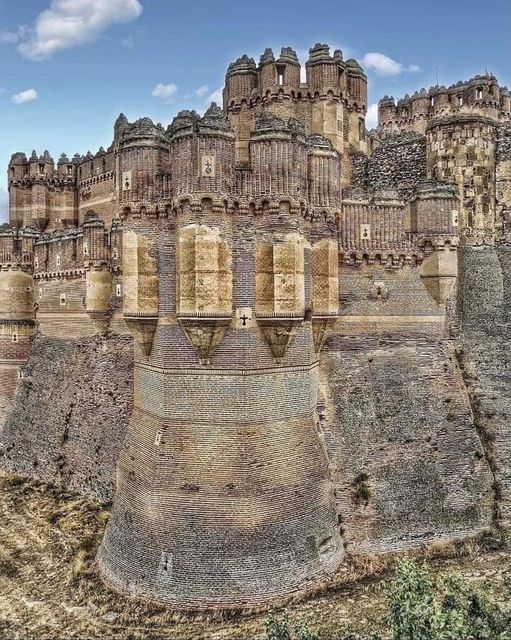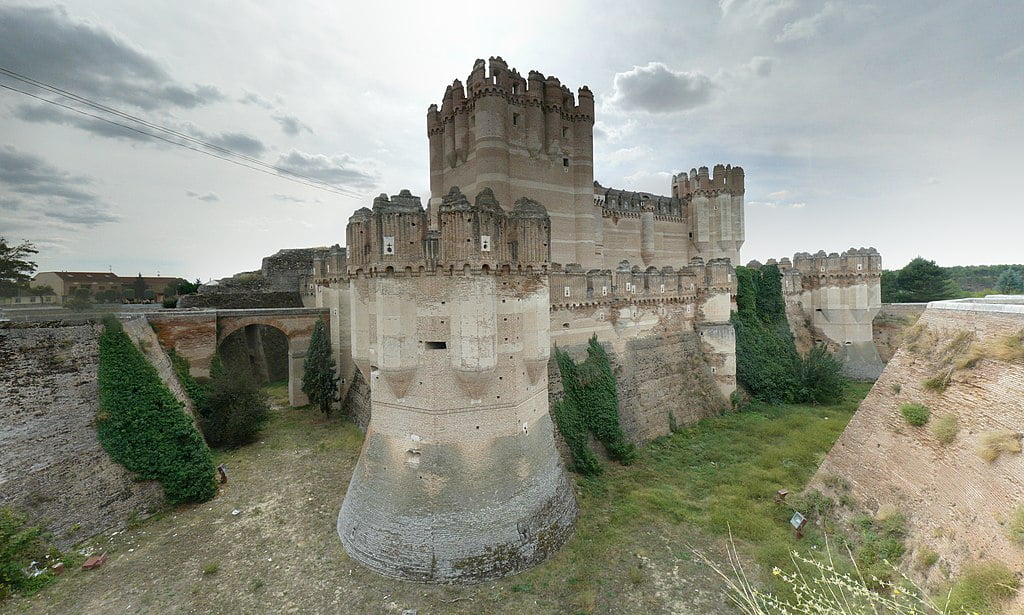The Castle of Coca: A Masterpiece of Spanish Mudejar Architecture


Nestled in the heart of central Spain, in the municipality of Coca, stands the imposing Castle of Coca. Constructed in the 15th century, this fortress is renowned as one of the finest examples of Spanish Mudejar brickwork, a unique architectural style that blends Moorish Muslim design with Gothic architecture.
The Castle of Coca was commissioned by Alonso de Fonseca, the powerful Archbishop of Seville, who sought to create a formidable yet aesthetically captivating stronghold. The result was a stunning fusion of styles that showcases the rich cultural interplay of medieval Spain. Mudejar architecture, characterized by intricate brickwork, ornamental arches, and elaborate tilework, reflects the enduring influence of Islamic art and craftsmanship in a predominantly Christian society.
One of the most striking features of the Castle of Coca is its use of brick as the primary building material. Unlike many European castles built from stone, this fortress displays an intricate tapestry of bricks, carefully arranged to create decorative patterns and textures. This choice of material not only exemplifies the Mudejar style but also adds a warm, earthy hue to the castle’s majestic silhouette.


The castle’s layout is a testament to the strategic and defensive needs of the time. It boasts a formidable array of battlements, towers, and a deep moat, all designed to withstand sieges and attacks. The keep, or “Torre del Homenaje,” rises majestically at the center, offering commanding views of the surrounding landscape. This tower, with its robust construction and elegant lines, embodies the Gothic influences that were integrated into the Mudejar design.
Inside the castle, visitors are greeted by a series of grand halls and chambers, each adorned with intricate plasterwork and coffered ceilings. The attention to detail is evident in every corner, from the finely carved wooden doors to the ornate tile floors. These interiors not only served as living spaces for the castle’s inhabitants but also as a showcase of the wealth and artistic taste of the Fonseca family.
The castle’s chapel is a particularly notable feature, blending religious symbolism with Mudejar artistry. Its elegant arches and beautifully decorated altars highlight the seamless integration of Christian and Islamic motifs, reflecting the cultural diversity of the period.
Over the centuries, the Castle of Coca has witnessed numerous historical events and has been preserved as a symbol of Spain’s rich architectural heritage. Today, it stands as a testament to the ingenuity and artistic vision of its creators. The castle is open to the public, allowing visitors to explore its many rooms and ramparts, and to appreciate the intricate beauty of Mudejar architecture.
The Castle of Coca remains a remarkable example of the fusion of cultures and architectural styles that defined medieval Spain. Its magnificent brickwork and harmonious blend of Gothic and Moorish elements continue to inspire awe and admiration, offering a glimpse into a time when art and architecture were powerful expressions of cultural identity and innovation.